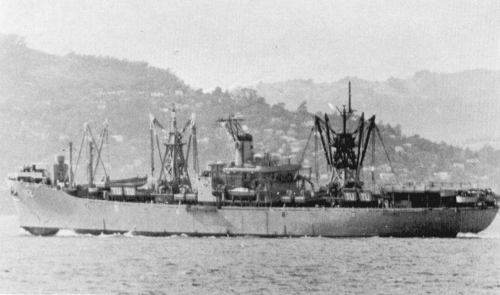
NAVYPEDIA
 Support the project with paypal
Support the project with paypal
Photo

Tulare 1980
Ships
| No | Name | Yard No | Builder | Laid down | Launched | Comm | Fate |
|---|---|---|---|---|---|---|---|
| AKA112, 1.1969- LKA112 | Tulare (ex-Evergreen Mariner) | Bethlehem, San Francisco | 16.2.1953 | 22.12.1953 | 12.1.1956 | NDRF 8.1992, scrapped 2011 |
Technical data
| Displacement standard, t | 12000 |
|---|---|
| Displacement full, t | 16800 |
| Length, m | 172.0 |
| Breadth, m | 23.2 |
| Draught, m | 7.90 |
| No of shafts | 1 |
| Machinery | 1 set De Laval geared steam turbines, 2 Combustion Engineering boilers |
| Power, h. p. | 22000 |
| Max speed, kts | 22 |
| Fuel, t | oil |
| Endurance, nm(kts) | 10000(20) |
| Armament | 4 x 2 - 76/50 Mk 33, helicopter deck |
| Military load | 319 troops, 4476 t of cargo, 9 LCM(6), 11 LCVP |
| Electronic equipment | SPS-10, 2x Mk 34 radars |
| Complement | 393 |
Standard scale images

Tulare 1963
Graphics
Project history
Paul Revere, Francis Marion and Tulare, the only new AKA and APA construction of the 1950s, were conversions of 'Mariner' cargo hulls (C4-S-1A). Of thirty-five 'Mariners' built, the Navy acquired five in all, the other two being the Polaris missile firing ship Observation Island and the navigational test ship Compass Island, both associated with the Polaris programme. The two attack (personnel) transports were fitted as amphibious squadron flagships or as troop commander or transport division flagships; they could handle landing craft and heavy vehicles with 10t, 30t and 60t cargo booms. In an early example of adaptation to helicopter operation, their helicopter decks were served by cargo elevators. In fact they were the last conventional attack personnel transports, as the transport function was next taken over by a combination of LPH (helicopter carriers) and LPD (landing ship docks with additional troop spaces). They could accommodate 1500 troops each.
Tulare was designed primarily for cargo, although she could carry 575 troops (and 500 vehicles), handling up to twenty-seven landing craft with heavy-lift (60t) booms rigged from her quadruped masts. Like the APAs, she had a helicopter platform.
Modernizations
1977-1978: - 1 x 2 - 76/50, 2x Mk 34 radars; + LN-66 radar
Naval service
No significant events.
 HOME
HOME FIGHTING SHIPS OF THE WORLD
FIGHTING SHIPS OF THE WORLD UNITED STATES OF AMERICA
UNITED STATES OF AMERICA AMPHIBIOUS SHIPS AND CRAFT
AMPHIBIOUS SHIPS AND CRAFT TULARE amphibious cargo ship (1956)
TULARE amphibious cargo ship (1956)
